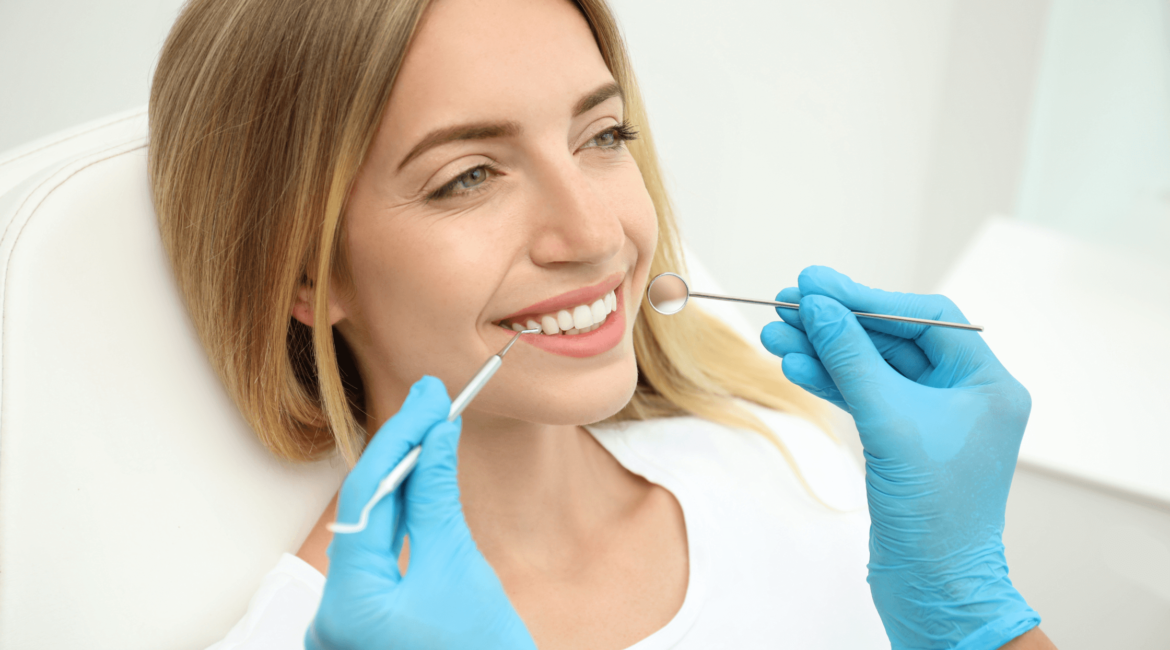Cosmetic dentistry is often associated with enhancing the appearance of your smile, but its benefits extend far beyond aesthetics. Many cosmetic dentistry procedures go hand in hand with functional improvements, providing patients with more than just a beautiful smile.
In this article, we’ll explore how many procedures used in cosmetic dentistry are ways of knocking two birds out with one stone by improving both aesthetics and oral health.
Orthodontic Solutions for Improved Functionality
Many cosmetic dentistry procedures, such as Invisalign or clear aligners, not only straighten misaligned teeth but also improve overall bite functionality.
Addressing alignment issues can alleviate a myriad of problems, including :
Gum disease
If your teeth are misaligned, more of your gums are likely to be exposed in your mouth, which makes them more vulnerable to gum disease.
Bad breath
Crooked teeth are much harder to clean effectively than an evenly aligned smile, as there are more places for bacteria to hide that are difficult for your toothbrush and to reach.
Enamel wear
Crowded or misaligned teeth have a tendency to protrude in abnormal directions, which can cause teeth in your lower jaw to rub against those in your upper jaw, and vice versa.
The abrasion wears away the enamel layer of your teeth, exposing the sensitive inner layer of your teeth called dentine. Not only can this cause you severe dental pain, but it also makes tooth decay much more likely to occur.
Tooth injuries
Protruding or misaligned teeth are generally less stable than evenly distributed teeth, as they don’t have nearly as much support from other teeth around them.
Upper teeth that stick out further than normal, for example, are more prone to becoming cracked and chipped, which is not only painful but also tricky to repair.
Dental Crowns and Bridges: Restoring Functionality
A dental crown fits over an existing tooth, and is a solution for deep decay, a fracture, or a crack.
At least three units make up a bridge: two crowns (abutments) fused to a pontic, or fake tooth, that replaces a missing tooth.
Crowns and bridges not only enhance the appearance of damaged or missing teeth, but also restore their functionality, improving your ability to bite and chew.

Veneers for Reinforced Tooth Structure
Dental veneers are custom-made shells that fit over the front surfaces of your teeth that conceal cracks, chips, stains and other cosmetic imperfections. Unlike dental bonding, dental veneers are much more difficult to chip, and tend to last longer.
Veneers not only create a stunning smile but also provide added strength to weakened or damaged teeth, preventing further damage and improving overall oral health.
Dental Implants: A Permanent Functional Solution
Beyond filling gaps in your smile, dental implants provide a sturdy and permanent solution for missing teeth, and come with an array of benefits from an oral health standpoint:
- Restores the ability to chew
- Helps keep the jawbone from shrinking due to bone loss
- Preserves the health of the surrounding bone and gums
- Helps keep adjacent (nearby) teeth stable
Full Mouth Rehabilitation: Comprehensive Functional Restoration
Full mouth rehabilitation, a holistic approach in cosmetic dentistry, addresses both aesthetic concerns and functional issues, and involves a combination of procedures tailored to improve the health, function, and appearance of the entire mouth.
This type of undertaking involves restoring every tooth in a person’s mouth with the primary goal of improving oral health. Procedures used in full mouth rehabilitation might include:
- Jaw repositioning
- Tooth extraction
- Placement of dental implants and crowns
- Invisalign
- Bone and tissue grafting
- Teeth cleaning and whitening
Temporomandibular Joint (TMJ) Treatment
Temporomandibular disorders (TMD) are disorders of the jaw muscles, temporomandibular joints, and the nerves associated with chronic facial pain. Any problem that prevents the complex system of muscles, bones, and joints from working together in harmony may result in temporomandibular disorder.
Cosmetic dentistry can play a role in treating TMJ disorders. For example, procedures like Invisalign, dental crowns, or bite adjustments can help alleviate the symptoms associated with TMJ issues, such as jaw pain and headaches, while at the same time enhancing your smile!
Digital Smile Design
Digital Smile Design (DSD) is a concept and methodology used in cosmetic dentistry to plan and design your smile digitally before any actual dental procedures take place.
It combines principles of dentistry, esthetics, and digital technology to enhance the outcome of various dental treatments that enhance both the aesthetics of your smile and oral health.
More precisely, a comprehensive digital smile design process incorporates the following methods:
Digital Technology
DSD relies heavily on digital tools such as imaging software, digital photography, and sometimes 3D scanning to capture accurate images of the patient’s face, teeth, and overall oral structure.
Facial Analysis
The process begins with a thorough analysis of the patient’s facial features, including the lips, gums, teeth, and surrounding structures. This helps in understanding the patient’s unique facial characteristics and how they relate to the smile.
Smile Design
Dentists use specialized software to design the patient’s ideal smile. This involves manipulating digital images of the patient’s teeth and gums to create a virtual representation of the desired outcome. Patients can often participate in the design process by expressing their preferences and expectations.
Mock-ups and Simulations
Digital Smile Design allows for the creation of digital mock-ups and simulations, which can be presented to the patient before any actual dental work begins. This gives the patient a visual preview of how their smile will look after the proposed treatments.
Treatment Planning
Once the digital smile design is finalized and approved by the patient, the dentist can use the digital plan as a guide for the actual dental procedures. This may include cosmetic procedures like veneers, crowns, teeth whitening, or orthodontic treatments.
Communication
DSD facilitates effective communication between the dentist, dental team, and the patient. Clear visual representations help ensure that everyone is on the same page regarding the desired outcomes and treatment plan.
Patient Involvement
Digital Smile Design actively involves patients in the decision-making process. They can provide feedback during the design phase, ensuring that the final result aligns with their expectations.

Modern Day Dental | Cosmetic Dentistry | St. Johns, FL
Cosmetic dentistry is not just about achieving a picture-perfect smile; it’s about enhancing the functionality and health of your teeth. Whether you’re seeking solutions for misalignments, damaged teeth, or missing teeth, cosmetic dentistry offers a range of procedures that can provide both aesthetic improvements and functional benefits.
If you’re considering cosmetic dentistry for any reason and happen to be located in or around St. Johns, Florida, get in touch with our team at Modern Day Dental to explore the possibilities for achieving a beautiful and functional smile!

